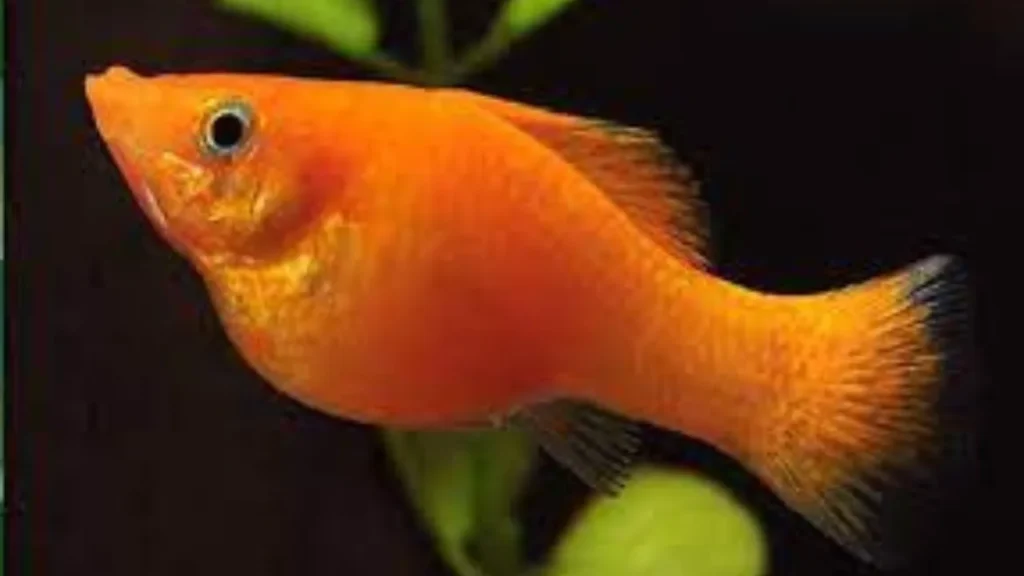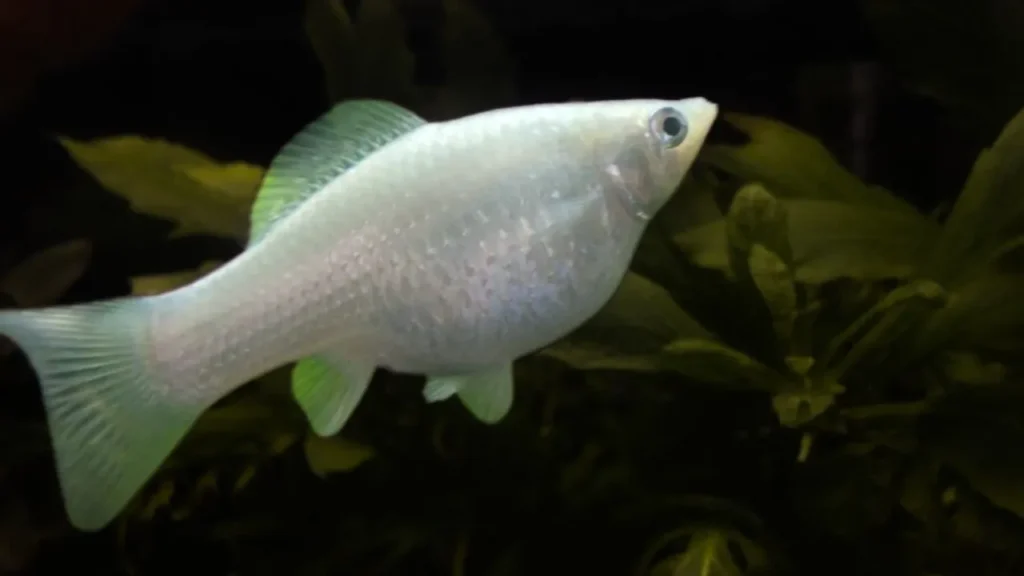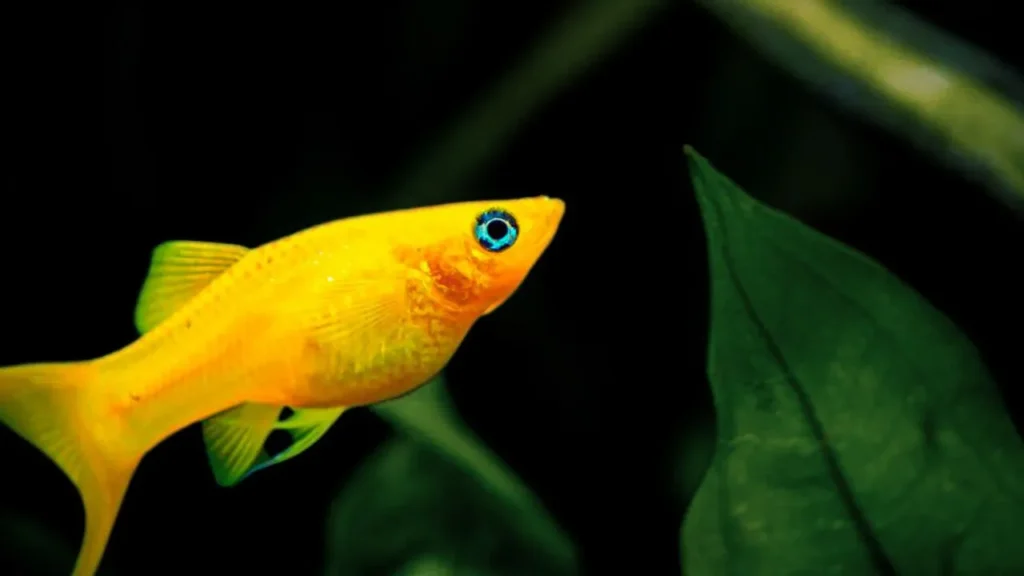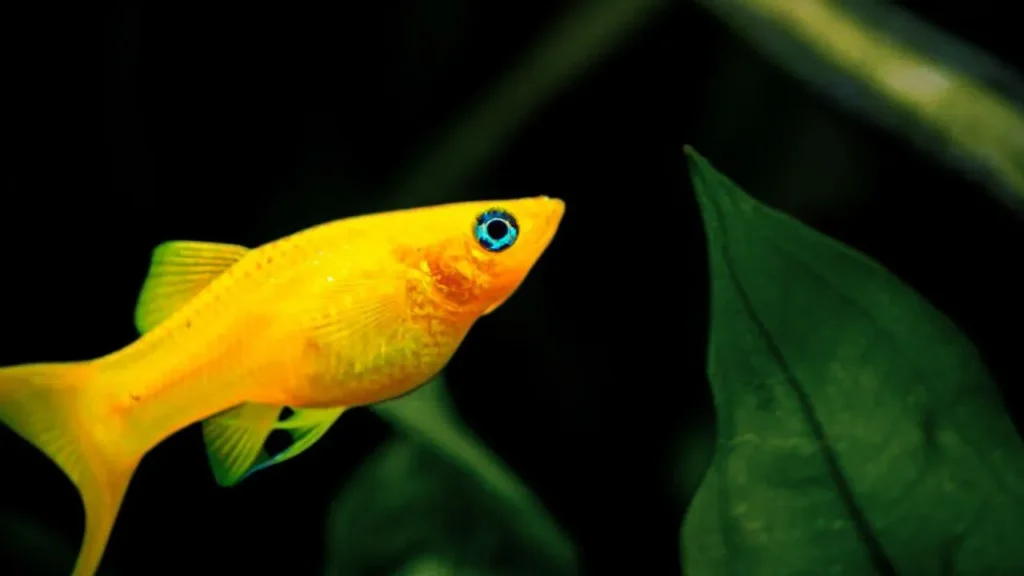For aquarium hobbyists who keep live bearing fish like mollies, being able to understand the molly fish pregnancy cycle, recognize the signs of pregnancy and estimate the gestation period is an essential skill. Understanding the molly fish pregnancy cycle allows you to prepare for fry care and ensure the health of the mother throughout the process. In this definitive guide, we’ll walk you through everything you need to know about molly pregnancy cycle, from conception to birth.
How To Tell If Your Molly Fish Is Pregnant
Recognizing the signs of pregnancy allows you to properly understand molly fish pregnancy cycle and prepare for your molly to give birth. Watch for these 5 indications that your female molly is expecting:

1. Gravid Spot
- Dark triangular or square marking near anal fin
- Spot grows opaque and larger as birth approaches
2. Rectangular Abdomen
- Bulging, boxy belly shape rather than rounded
- In advanced pregnancy, eyes of fry visible through skin
3. Increased Appetite
- Pregnant mollies eat more to nourish developing fry
- Provide high quality foods like brine shrimp
4. Aggression & Reclusiveness
- Hormonal changes make mollies more territorial
- Fish seeks isolated corner of tank to give birth
5. Lethargy
- Decreased swimming activity and energy as birth nears
- Allow preggo fish plenty of rest
How Long Does It Take For Molly To Give Birth?
One of the most common questions molly owners have is how long does it take for molly to give birth? The gestation period of a molly fish is typically 21-28 days from successful mating to birth. However, this can vary slightly depending on factors like water temperature and the individual fish.
In general, you can expect a pregnant molly to give birth around 3-4 weeks after mating. Lower water temperatures in the 70-75°F range will result in a longer pregnancy closer to 4 weeks, while warmer 80°F water can shorten the gestation period to 3 weeks or slightly less.
Keep a close eye on a pregnant molly’s body shape and behavior as you approach the 3-4 week mark to be prepared for fry delivery. Recognizing the signs of imminent birth can help you provide the best conditions for a smooth birthing process.
What To Look For In A Pregnant Molly Fish

Pregnant molly fish exhibit a number of physical and behavioral changes throughout their pregnancy that can clue you into their pending motherhood. Here are some of the most common signs of pregnancy in molly fish:
- Gradual enlargement of the abdomen as eggs develop
- Visible dark eyespots of fry through the body wall
- Increased appetite and speed of eating
- Lethargic or resting more often, especially low in the tank
- Isolation from other fish near birthing time
- Timeframe of 3-4 weeks after successful breeding
If you notice your female molly displaying a box-like, swollen belly along with any of the other symptoms, it’s very likely she’s expecting! Providing optimal care during her pregnancy gives the fry their best chance at a healthy start.
You May Like: Everything You Need to Know About Pregnant Molly Fish: A Comprehensive Guide.
How Long Are Mollies Pregnant For?
Now that you know what to look for, you may be wondering how long are mollies pregnant for?
On average, the gestation period of a molly fish ranges from 21-28 days. Factors like water temperature, diet, and genetics can create some variability. Here’s an overview of the typical molly pregnancy timeline:
Week 1
The eggs are fertilized internally and embryo development begins. There are no outward signs of pregnancy this early on.
Week 2
The eyes and tails of the fry become visible through the body wall. Molly’s abdomen may begin swelling slightly.
Week 3
Molly’s belly becomes boxily swollen with fry. Her appetite will increase and she may start resting on tank bottom more.
Week 4
Molly becomes very rotund and lethargic. Fry eyespots are dark and prominent through stretched belly. Labor begins and fry are born.
With high-quality care, most molly fish stay pregnant for 4-5 weeks before giving birth. Lower temperatures extend the timeline, while warmer waters can shorten it to just 3 weeks. Keep an eye out for symptoms from weeks 2-4 to estimate a due date.
So in ideal conditions, a pregnant molly will carry fry for 4-5 weeks before giving birth. Cooler water temperatures of 70-75°F can extend this to up to 6 weeks, while warmer 80°F water can shorten it to as little as 3 weeks.
Keeping a close eye on your molly’s symptoms and behaviors will give you a good indication of how far along she is in her nearly month-long pregnancy.
Caring For Pregnant Molly Fish
Providing excellent care for pregnant molly fish gives momma and babies the best chance of thriving before, during, and after birth. Follow these following tips:

Nutritious Diet
- Feed high protein foods like brine shrimp, bloodworms, daphnia
- Offer veggies for fiber like blanched zucchini, spinach, peas
- Provide snacks between meals to satisfy increased appetite
Reduce Stressors
- Dim lights, limit noise, maintain stable water parameters
- Add extra plants and hides for comfort and seclusion
- Use tank dividers if needed to control aggressive fish
Optimal Water Conditions
- Maintain temp between 75-82°F for healthy development
- Perform extra water changes to reduce waste and replenish oxygen
- Use air stone for added surface agitation and oxygenation
Nursery Tank
- Move pregnant molly to bare bottom 5-10 gallon nursery tank as birth approaches
- This protects vulnerable fry and controls breed prolific mollies
With attentive care in a stress-free environment, your pregnant molly fish has the best chances of smoothly delivering and raising healthy fry.
Molly Fish Giving Birth Signs
As your pregnant molly nears the end of her 4-week pregnancy, you’ll notice some clear molly fish giving birth signs indicating labor is imminent:

- Sunken belly: The extremely swollen abdomen will appear sunken or hollowed around the vent.
- Lethargy: She will hang out near the bottom and be very inactive.
- Loss of appetite: She’ll display little interest in food leading up to birth.
- Clamped fins: Her fins fold tightly against her body.
- Isolation: She seeks solitude away from tankmates as birth approaches.
- Labored breathing: Her gill movements become more pronounced and rapid.
- Stringy poop: Feces will appear white or clear leading up to birthing.
When molly goes into active labor, you’ll observe intense quivering of the body along with rapid gill movement as contractions ripple to push out babies. The birthing process can take 1-12 hours. Provide calm privacy during delivery.
After birth is complete, the mother will likely eat any fry remaining in the tank, so have a nursery ready to isolate the babies. Time to care for the newborn mollies!
Once you observe this combination of symptoms, get ready to welcome the fry into your aquarium! Having a nursery tank set up will give them the best chance to thrive.
Preparing For the Molly Fish Pregnancy Cycle
Now that you know what to expect from the average molly fish pregnancy cycle, let’s go over some tips to prepare for this joyful process:
- Optimize water quality: Test parameters regularly and perform partial water changes to ensure pristine conditions. This supports fetal development and birth.
- Feed a high-quality diet: A diet rich in protein and micronutrients is crucial for growing fry. Feed quality flakes, pellets, or frozen foods.
- Add hiding spots: Have plenty of plants, caves, and décor for mama molly to give birth in peace. Floating plants give newborns security.
- Set up a nursery tank: A 10-20 gallon aquarium with fine gravel substrate and gentle filtration provides an ideal fry grow-out space.
- Have supplies on hand: Keep spare hang-on-back breeder boxes, powdered fry food, nursery box lids, etc. ready to go for rearing newborn mollies.
Preparing properly for the approximate 4-week duration of the molly pregnancy cycle will reward you with a smooth birthing process and healthy, fast-growing fry. Enjoy this special time anticipating your mollies’ impending motherhood!
Also Read: Pregnant Black Molly Fish: What to Expect and How to Care for Them?
Caring For Newborn Molly Fry
The tiny molly babies that emerge are vulnerable and need special care for several weeks:

- Setup: Use a dedicated 10 gallon nursery tank with sponge filter, plants, and gentle water flow.
- Feeding: Offer newly hatched brine shrimp, crushed flakes, infusoria for first 2 weeks. Small meals 5-6 times daily.
- Protection: Don’t mix babies with adult fish until fry are 1-1.5 inches long or they risk getting eaten.
- Maintenance: Daily 25% water changes to keep water clean for delicate fry.
With attentive feeding and rearing, the molly fry will mature into juvenile fish ready to join the main tank in 4-6 weeks, bringing great joy watching the new generation grow and thrive!
Also Read: How to Tell If a Molly Fish Is Dying? 7 Signs To Look For.
Frequently Asked Questions About Molly Pregnancy
Caring for pregnant mollies and their fry brings lots of rewards but also many questions for new aquarists. Here are answers to some commonly asked questions:
How Long Are Mollies Pregnant For?
The molly fish pregnancy cycle lasts 21-60 days depending on variety. Black mollies gestate for about 30 days. Sailfins take 35-60 days. Dalmatians have the longest pregnancy around 50-70 days before giving birth.
How Can You Tell If A Molly Is Pregnant?
Signs include a dark gravid spot, boxy swollen belly, increased appetite, aggression, reclusiveness, and lethargy. Look for a rectangular abdomen rather than round belly. Advanced pregnancies show eyes of fry through the skin.
Should A Pregnant Molly Be Separated?
Near birth, move the expectant molly to a dedicated 5-10 gallon nursery tank. This bare bottom tank with plants and gentle filtration protects vulnerable newborn fry and lets you control prolific mollies.
What Do Baby Mollies Eat?
Newborn molly fry eat infusoria and newly hatched brine shrimp for the first 2 weeks. Then gradually offer crushed high quality flakes. Feed babies small amounts 5-6 times daily.
When Can You Add Baby Mollies To Main Tank?
Don’t mix vulnerable newborn fry with adult fish until they mature to 1-1.5 inches long. This takes 4-6 weeks of growth and daily water changes in the nursery tank before they can join the main community safely.
Final Words
We hope this guide has equipped you with the knowledge to smoothly navigate molly pregnancy from start to finish – from recognizing signs of pregnancy, caring for expectant moms, assisting with live birth, and raising the delicate fry. With attentive tank maintenance and nutrition, your mollies and babies will thrive!
The molly fish pregnancy journey brings great excitement to any aquarium as you anxiously await the joyful day of birth. If you provide excellent care for preggo mollies and vulnerable fry, you’ll have the satisfaction of watching your fish family grow and flourish for years to come.
Reference: https://badmanstropicalfish.com/pregnant-molly/

